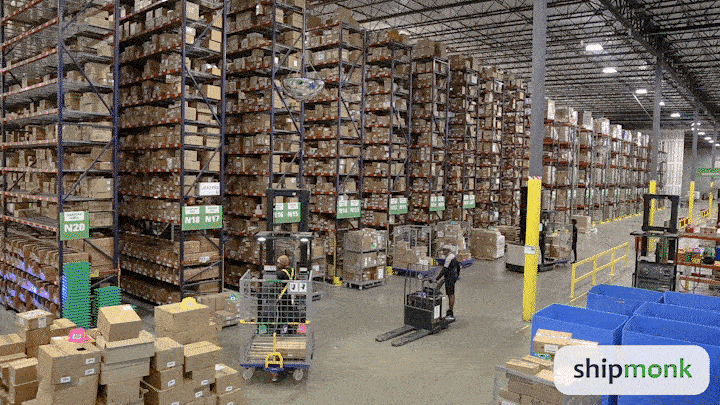Business reports no longer need to be manual tasks that consume hours of your team's time. With artificial intelligence, it's now possible to generate automated reports in minutes that not only display data but also deliver insights in natural language ready for decision-making.
In this guide, you will learn how to use AI to generate automated reports in 2025, what its advantages are, how to implement them step by step, and the trends that will shape the future of intelligent reporting.
What Is an AI-Powered Automated Report
An AI-powered automated report is a document or dashboard generated autonomously by an artificial intelligence system.
Unlike traditional reports:
- Traditional: require manual data collection and human analysis.
- With AI: connect data sources, analyze information in real time, and generate clear explanations in natural language.
AI not only presents numbers—it also interprets patterns, anticipates trends, and summarizes findings in a comprehensible way.
Key Advantages of Automating Reports with AI
Time Savings
Automation eliminates hours of manual work in data collection, consolidation, and analysis.
Error Reduction
By minimizing human intervention, errors in calculations and reports are significantly reduced.
Predictive Insights
AI detects hidden patterns and generates predictions based on historical and real-time data.
AI vs. Traditional Report Automation
| Feature | Traditional Automation | AI-Powered Reports |
|---|---|---|
| Generation Rules | Fixed and limited | Flexible, based on machine learning |
| Type of Analysis | Descriptive (what happened) | Predictive and prescriptive (what will happen and what to do) |
| Natural Language | Not available | Yes, automatically generated narrative |
| Adaptability | Low | High, learns and improves over time |
Popular Tools and How to Choose the Right One
There are multiple categories of AI-powered reporting solutions, from BI platforms to integrated conversational assistants.
Selection Criteria
-
Ease of use without technical knowledge
-
Integration with existing systems (CRM, ERP, spreadsheets)
-
Advanced AI capabilities (predictive insights, natural language narrative)
-
Technical support and documentation
Cost Comparison
Pricing models vary between basic subscriptions, per-user payments, or enterprise licenses. Evaluate ROI based on time saved and the quality of enabled decision-making.
Security and Compliance
Choose solutions that comply with regulations such as GDPR and ensure encryption and protection of sensitive data.
Steps to Create Your Automated Report Without Coding
1. Connect Your Data Sources
Integrate CRM, ERP, spreadsheets, or messaging platforms.
2. Design KPIs and Objectives
Define which metrics truly matter: sales, conversion, costs, productivity.
3. Generate the Draft with AI
AI automatically builds the first consolidated report.
4. Add Natural Language Narrative
Turn data into understandable explanations for the entire team.
5. Schedule Automatic Updates
Set the frequency (daily, weekly, monthly) and team distribution.
6. Validate with Human Review
An analyst should review to ensure accuracy and strategic context.
Templates and Formats that Accelerate Results
Sales and Marketing
Campaign performance reports, conversion funnels, and customer metrics.
Finance
Financial reports, budget projections, and cost analysis.
Human Resources
Performance, productivity, turnover, and employee satisfaction reports.
Integrate CRM, ERP, and Messaging Channel Data
WhatsApp and Instagram
Real-time interaction and engagement metrics.
HubSpot,and Other CRMs
Automatic generation of sales reports, lead tracking, and pipeline updates.
Cloud Spreadsheets
Direct connection with Google Sheets or Excel Online to centralize data.
Common Mistakes and How to Avoid Them
Poorly Defined KPIs
Automating irrelevant metrics leads to useless reports.
Unclean Data Sources
Duplicate or inconsistent data affects accuracy.
Lack of Human Feedback
AI doesn’t replace human oversight—it complements it.
Smart Reporting Trends for 2025
Generative Narrative
AI will automatically explain results in clear paragraphs.
Predictive Dashboards
Dashboards that anticipate trends and suggest actions.
Digital Employees
Systems capable of autonomously generating reports. Darwin AI, for example, offers digital employees specialized in reporting and analysis.
Time to Move from Reports to Insights with Darwin AI
The future is not just about having data, but taking action based on automatic insights.
With Darwin AI, you can have digital employees that:
-
Generate real-time reports
-
Explain results using natural language
-
Act on the information (customer follow-up, campaign adjustments)
👉 Discover how our digital employees can transform your reports into concrete actions.
Frequently Asked Questions About AI for Automated Reporting
Do I need technical knowledge to use AI report generators?
No. Modern solutions allow you to create intuitive reports by connecting data and defining metrics.
How long does it take to implement an automated reporting system?
From a few hours to a few weeks, depending on the complexity of your data sources.
How do I measure the ROI of AI automation?
Calculate hours saved, reduced costs, and faster decisions enabled by insights.
.png)





















